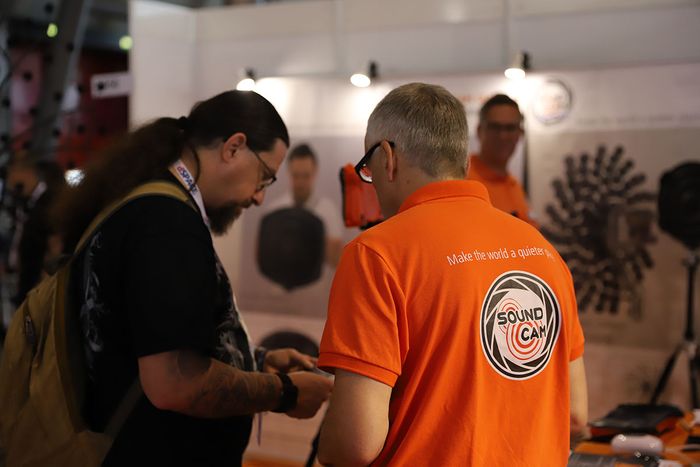We're sorry, but we couldn't find any results that match your search criteria. Please try again with different keywords or filters.
Loading
Tuesday, May 20, Hall 8 - morning session
-
Hall 8The presentation mainly shares Wattical's innovative applications in battery charge/discharge testing. With the support of fiber-optic communication technology, it...
-
Hall 8Traditional environmental testing of automotive components has become more data-driven on its road toward electric and software-defined vehicles. Today,...
-
Hall 8We will present examples showing the influence of hydrogen on fatigue strength in tension-compression tests, rotating bending tests and...
-
Hall 8The rise of software-defined vehicles (SDVs) is revolutionizing the automotive industry with advances in connectivity, automation and functionality. However,...
-
Hall 8Torus is a battery electric city bus that can be driven manually or in automated mode (Level 3+) and...
-
Hall 8Compredict and Dewesoft join forces to provide OEMs and Tier 1 customers with a holistic approach from data acquisition...
-
Hall 8FRF testing has never been as hard, and yet as easy, as it is today. With physical prototypes becoming...
-
Hall 8Catesby Tunnel houses a 2.7km-long, purpose-built, straight-road test track allowing an extensive range of vehicle assessment studies to be...
Tuesday, May 20, Hall 8 - afternoon session
-
Hall 8Electric vehicle battery testing presents unique challenges to OEMs, suppliers and contract test labs as it requires the integration...
-
Hall 8As autonomous vehicles (AVs) and innovative seating configurations become more common, traditional crash testing methods must evolve. The THOR-AV-50M...
-
Hall 8openDAQ is an open-source SDK designed to streamline the integration of data acquisition hardware and software by embracing standards...
-
Hall 8Apart from functional and electric tests, testing for vibroacoustic tolerances is becoming increasingly common and sought after. Many OEMs demand adherence to...
-
Hall 8This project is about enabling autonomous drive for race cars in competitive scenarios, delivering the highest performance levels while...
Tuesday, May 20, Hall 10 - morning session
-
Hall 10Itech will showcase advanced power testing solutions at Automotive Testing Expo, focusing on electric vehicles (EVs) and photovoltaic (PV)...
-
Hall 10In the automotive sector, functional safety compliance has been carried out by performing classical standalone ISO 26262 assessments. When...
-
Hall 10As the automotive industry accelerates toward electrification, precision measurement in the electric vehicle (EV) powertrain has become more critical....
-
Hall 10Designing a test system without losing sight of the application and the user requires a great deal of experience...
-
Hall 10Measurement microphones, despite their precision, inherently alter the sound field due to reflections and diffractions caused by their size...
-
Hall 10The presentation introduces a structured approach to efficiently test ECUs from a software-in-the-loop (SIL) environment to real hardware. Initially,...
-
Hall 10In the fast-evolving field of e-mobility, advanced thermal management plays a crucial role in the success of electric vehicles....
-
Hall 10The ADwin product family provides real-time solutions for applications ranging from kHz to MHz with ns-timing precision. Applications are...
-
Hall 10Traditionally, calibration has been a time-consuming, manual endeavor. However, as powertrain systems grow more complex and interconnected, innovative AI-driven...
Tuesday, May 20, Hall 10 - afternoon session
-
Hall 10This speech provides an approach to develop the flow of flash bootloader through a graphical interface, which solves the...
-
Hall 10Automotive Ethernet is the enabler for zonal networks. However, the high gigabit bandwidth between HPC and zonal controls is...
-
Hall 10Automotive electrical and electronic (E/E) architectures are increasingly transitioning from traditional bus topologies to ethernet-based communication. Our product managers...
-
Hall 10In recent years, the focus of vehicle emission reduction has been shifting from exhaust to non-exhaust emissions. Brake wear...
Wednesday, May 21, Hall 10 - morning session
-
Hall 10Manual end-to-end testing of light functions in HIL systems or vehicles is a time-consuming task. The increasing complexity of...
-
Hall 10This presentation will talk about the change in testing requirements that transportation electrification brings with it. The transition from...
-
Hall 10This talk showcases the benefits of combining fast ECU access with self-learning AI methods. Automated self-learning of meaningful ranges...
-
Hall 10Transparency, collaboration and traceability are gaining more importance in development and deployment of simulation artifacts (e.g. models) due to...
-
Hall 10Mercedes-Benz analyzes the smallest vehicle movements in order to perfect the driving characteristics typical of the brand. Hear how...
-
Hall 10The presentation will focus on the changes in batteries in terms of weight and size and the resulting requirements...
-
Hall 10In the future, the high-voltage electrical systems of EVs will be complemented by dual 12V/48V electrical systems. These significantly...
-
Hall 10As a leading provider of inductive telemetry solutions, Manner has now overcome the challenges of battery-powered radio telemetry. Our...
-
Hall 10Every year, heatstroke-related child fatalities in cars highlight the urgent need for action. Auto makers are developing sensor-based systems...
Wednesday, May 21, Hall 10 - afternoon session
-
Hall 10This presentation outlines IAV's successful transformation of test facilities from conventional to electric drives. IAV has converted combustion engine...
-
Hall 10In the rapidly evolving hybrid and electric vehicle (HEV) market, battery technology stands at the forefront of innovation, driving...
-
Hall 10With the concept of new EEA and SDV, there are new requirements related to diagnostic systems, for example unified...
-
Hall 10Automotive software testing is undergoing a major transformation. While test automation has become standard, creating test cases still requires...
Thursday, May 22, Hall 8 - morning session
-
Hall 8As electric vehicles become increasingly common, the need to ensure their safety and reliability is more important than ever....
-
Hall 8What if you could observe a vehicle’s energy behavior the way an MRI scans the human body – non-invasively,...
-
Hall 8The presentation focuses on advanced analysis of electric drivetrains beyond pure performance and efficiency measurement. It explains a few...
-
Hall 8Due to current and upcoming legislation, the requirements for emissions measurement have changed vastly. New components such as N2O...
-
Hall 8The presentation focuses on enhancing the debugging process for software-defined vehicle (SDV) platforms by integrating TTTech Auto’s dataloggers with...
-
Hall 8We present a new platform for high-speed cameras and explain the advantages for tests in the automotive environment. The...
Thursday, May 22, Hall 10 - morning session
-
Hall 10Due to the environmental and installation conditions of power supplies for testing, there are different requirements for the protection...
-
Hall 10Every new vehicle is connected now. From passenger cars and self-driving buses in smart cities, high-speed trains, long-haul trucks...
-
Hall 10As a leading provider of telemetry solutions, Manner is also renowned for its high-precision torquemeters. Its torquemeters are the...
-
Hall 10Lack of experts and loss of know-how and experienced engineers are becoming an increasing driver for automation and the...
-
Hall 10The 'intelligence' of the batteries and e-drive is located in an ECU. Due to the manufacturing robustness of EV...
-
Hall 10This presentation will highlight how 51Sim uses cutting-edge 3D Gaussian splatting (3DGS) in combination with advanced graphics simulation technologies...


























































